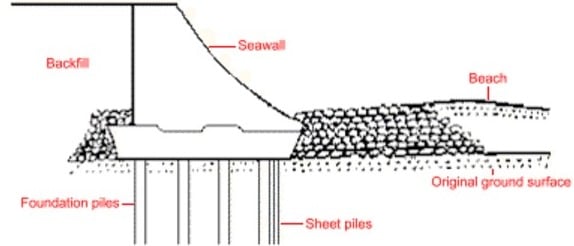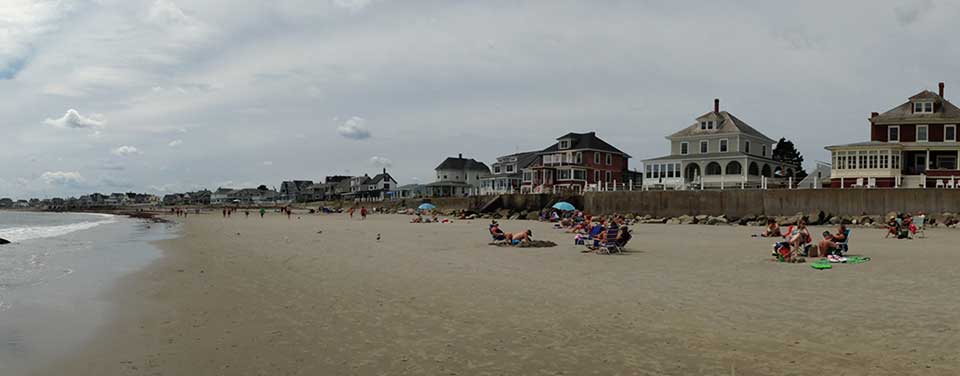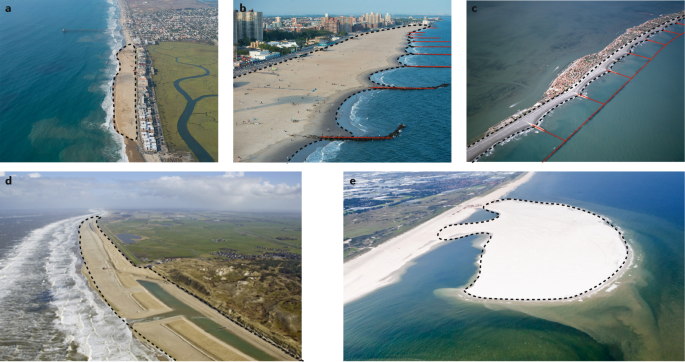Facts About Shore Protect Team Revealed
3 Simple Techniques For Shore Protect Team
Table of ContentsLittle Known Facts About Shore Protect Team.The Buzz on Shore Protect TeamShore Protect Team Can Be Fun For AnyoneShore Protect Team Things To Know Before You BuyIndicators on Shore Protect Team You Need To KnowShore Protect Team Things To Know Before You BuyShore Protect Team - Truths
Decline in property value: As the location tourist is impacted by disintegration, so then is the economic situation. Buyers are less most likely to look for a coastline home that might be ruined at any type of minute by the impending flooding and erosion emergency situation. In turn, residential property worth can go down greatly and influence the entire region.Whether a beach is simply tiny and congested or needs to shut entirely for the safety of the community and close-by homes, this significantly affects tourist. Consequently, neighborhood economic climates are influenced (https://www.slideshare.net/ShoreProtectTeam?tab=about). Risk of injury: The raised risk of flooding and structural failures creates an enhanced danger of injury to neighboring visitors and area participants

is home to even more than 84,240 miles of coast with 41% of it exposed to the open ocean. Coastal designers supervise of securing the coast versus changes by lessening the detrimental effects of both all-natural and man-made occurrences. Shoreline stablizing is directly related to their task. Beachfront resorts: Due to the fact that shoreline erosion effects tourist, it influences the success of waterfront hotels.
Little Known Questions About Shore Protect Team.
Coastal business companies: No visitors implies no organization. Coastal state parks: State parks that exist along coasts are at danger of damages.
Soft stablizing is a much better service for the environment and more lasting overall. Difficult stablizing utilizes synthetic frameworks as defense to regulate disintegration. Generally, these frameworks are installed at best angles or alongside quit sand activity and decrease the pressure of waves. The majority of forms of difficult stablizing like seawalls and sheet metal are not suitable for shoreline stabilization.
Some Known Details About Shore Protect Team
There's likewise not nearly enough evidence of their efficiency depending on the sort of coastline and regional problems. Tough stablizing strategies have a tendency to be much more difficult to install and do not match the natural aesthetic, standing out like a sore thumb and damaging regional ecosystems in several scenarios. Beach sustenance is the procedure of adding lost sand and debris back to beaches after erosion has actually taken place.
TrapBags aid in the process of coastline nutrition by protecting all-natural communities and permitting plants to grow. While this procedure can be expensive and is not irreversible, the pros have a tendency to surpass the cons. TrapBag obstacles deal numerous residential properties that make them suitable for coastal and shore erosion defense. They're: Eco-friendly: You can make use of indigenous soil both to surround and to load the TrapBags.

Shore Protect Team for Beginners
Easy to set up: Reduce of installment implies TrapBags can be deployed quickly in the occasion of an emergency. They can also be set up with no hefty machinery. Inexpensive: TrapBags are ideal for both small and huge areas of coastline. They provide a cost effective service to cover jobs of any size.
The suitable seawall style depends on location-specific facets, consisting of bordering disintegration processes. There are three main kinds of seawalls: upright, bent, tipped, and piles (see table below).
Natural barriers, such as reef and mangrove woodlands, protect against the spread of tidal waves and the circulation of coastal waters and alleviated the flooding and surge of water. A cost-benefit strategy is an efficient way to figure out whether a seawall is suitable and whether the benefits are worth the expense.
Some Of Shore Protect Team
A seawall is a static feature which can conflict with the dynamic nature of the coast and impede the exchange of sediment between land and sea. Benefits and negative aspects of seawalls according to Short (1999) Advantages Negative aspects Long term service in comparison to soft beach nutrients (http://localadvertised.com/directory/listingdisplay.aspx?lid=103840).

This can create beaches to dissipate, providing them ineffective for coastline goers. Usually, seawalls can be an effective way to regulate coastal erosion, yet just if they are created well and out of materials that can withstand the force of continuous wave energy.
The 15-Second Trick For Shore Protect Team
Incorporated with a high building and construction cost, this has actually resulted in enhancing use of various other soft design seaside administration choices such as beach replenishment. Seawalls are constructed from numerous materials, many commonly reinforced concrete, stones, steel, or gabions. Various other possible building materials consist of plastic, timber, aluminum, fiberglass composite, and biodegradable sandbags made of hemp and coir. The ideal seawall style relies upon location-specific aspects, consisting of surrounding disintegration processes. There are 3 major types of seawalls: upright, rounded, stepped, and piles (see table below). A record published by the United Nations Setting Program (UNEP) suggests that the tidal wave of 26 December 2004 caused much less damage in the locations where natural obstacles were present, such as mangroves, reef or seaside greenery.
All-natural barriers, such as reef and mangrove forests, prevent the spread of tsunamis and the circulation of seaside waters and reduced the flood and surge of water. A cost-benefit strategy is an efficient means to determine whether a seawall is appropriate and whether the advantages are worth the expense.
The 7-Second Trick For Shore Protect Team
A seawall is a static attribute which can contrast with the dynamic nature of the coast and impede the exchange of sediment between land and sea. Benefits and downsides of seawalls according to Short (1999) Benefits Drawbacks Lengthy term solution in comparison to soft coastline nutrition.

This can trigger coastlines to dissipate, rendering them worthless for beach goers. Usually, seawalls can be an effective method to manage coastal erosion, however only if they are created well and out of products that can stand up to the pressure of recurring wave energy.